Editing Compound Nodes
After you create a new compound node (or collapse existing nodes into a compound node as described in the next section), click the first icon in the title bar to open the node in a separate editing window in the Material room.
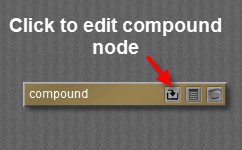
Click the Compound node icon to edit the compound node in a separate window.
When you enter the Compound Node editor, you’ll see the following features:
Return to Main Window: To return to the main window in the Advanced Material room, click the icon that appears at the upper left corner of the Compound Node editor.
Breadcrumb trail: Compound nodes can be nested (in other words, you can have compound nodes within compound nodes). If you are editing a nested compound node, you’ll be able to follow a breadcrumb trail to move forward and backward in the hierarchy.
External Outputs: The nodes that you connect here will be exposed on the compound node as output plugs that you can connect to other nodes in the main window.
External Inputs: The nodes that you connect here will be exposed on the compound as inputs plugs and settings that you can connect to other nodes in the main window.
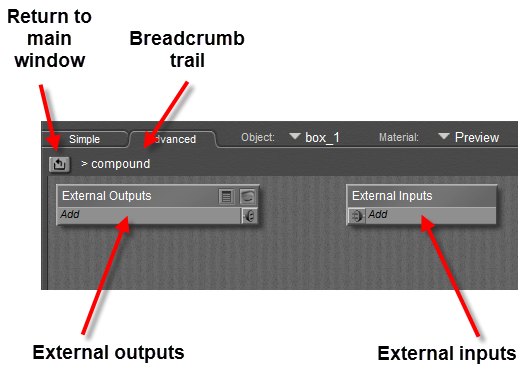
Compound node editor.
When creating connections to the external inputs and outputs, you’ll use the same steps as you would in the main Material room Edit view. In the following figure, a Turbulence node has been attached to the External Outputs, and a second external output (Noise) is in the process of being added.
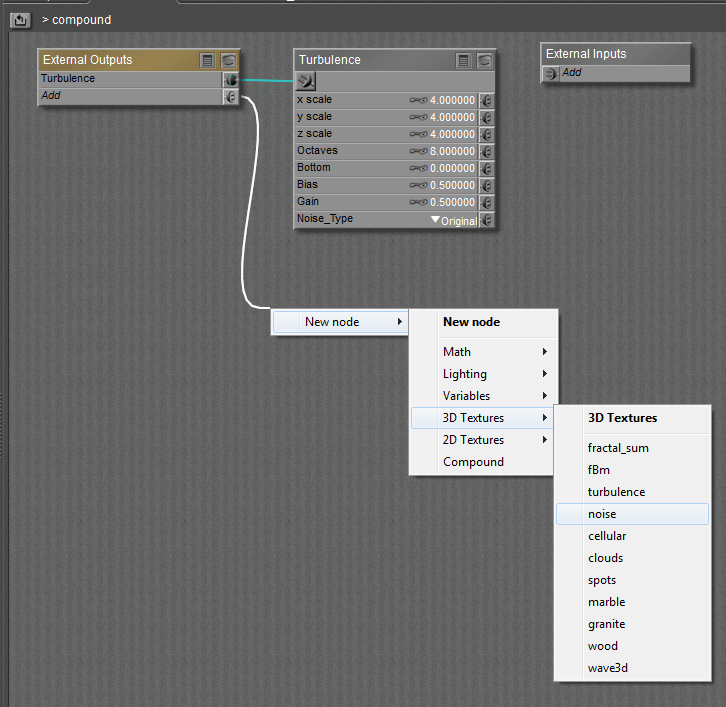
Adding external outputs.
Next, we’ll connect one input each from the Turbulence and Noise nodes into the External Input connector in the compound node. What you have now is a very basic compound node that has two eternal outputs, and two external inputs.
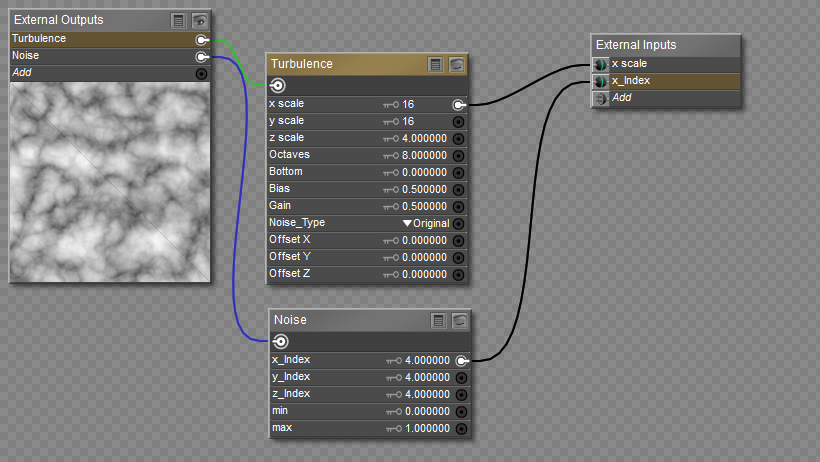
Connecting external inputs.
Click the Eye icon in the upper right corner of the External Outputs node to expand the preview. When you highlight the name of one of the external outputs, the preview will update to display the results that will be output through the compound node.
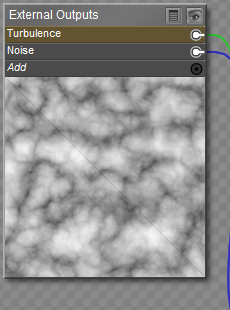
Previewing external outputs.
After you are finished editing, click the icon in the upper-left corner of the Compound Node view (at the left of the breadcrumb trail) to return to the main Advanced Material room view. Your compound node will now display the external inputs and outputs that you created in the Compound Node editor window.
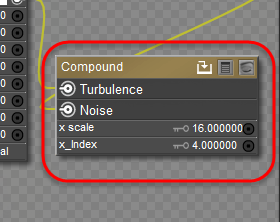
The compound node in the main window.
You can then connect your compound node into other nodes in the main Material room, just as you do with any other node.
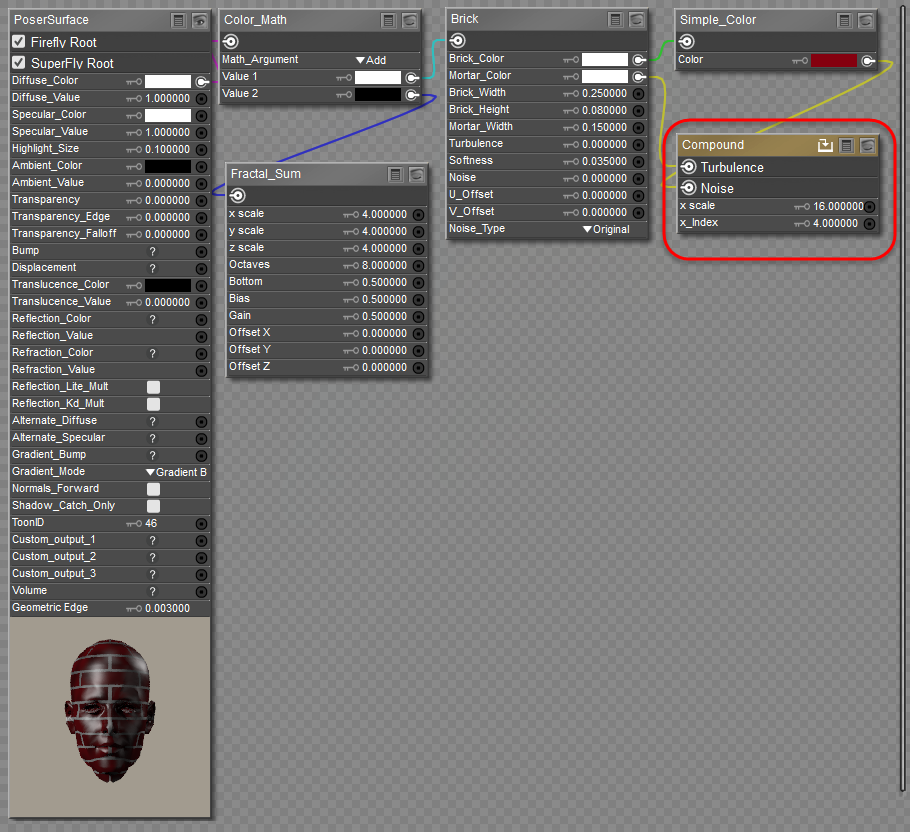
Connecting the compound node to other material nodes.